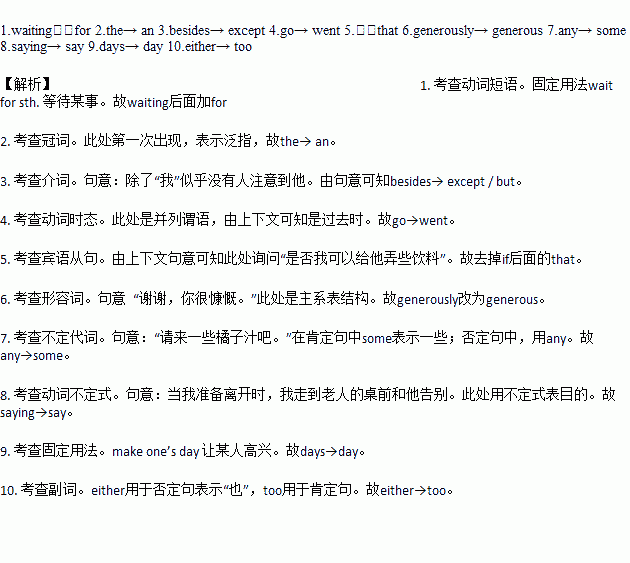题目内容
假定英语课上老师要求同桌之间交换修改作文,请你修改你同桌写的以下作文。文中共有l0处语言错误,每句中最多有两处。每处错误仅涉及一个单词的增加、删除或修改。
增加:在缺词处加一个漏字符号(∧),并在其下面写出该加的词。
删除:把多余的词用斜线(\)划掉。
修改:在错的词下划一横线,并在该词下面写出修改后的词。
注意:1. 每处错误及其修改均仅限一词;
2. 只允许修改l0处,多者(从第11处起)不计分。
Yesterday I stepped into a restaurant for lunch. As I was waiting my order to come, I noticed the old man in a wheelchair roll himself over to a table. No one and me seemed to notice him. I got up and go over to his table and asked if that I could get him something to drink. He smiled and said, “Thank you.You are generously. I’d like any orange juice, please.”When I was getting ready to leave, I walked by the old man’s table to saying goodbye. He thanked me again and told me I had made his days, coming over and helping him out. I gave him a hug and told him he had made my day, either.


 ),并在其下面写出该加的词。
),并在其下面写出该加的词。 re shown. However, the paintings that made him famous after his death did little for him when he was alive.
re shown. However, the paintings that made him famous after his death did little for him when he was alive. rass is green, and crows are black. But the colors are used in such a way that it looks better than a photograph.
rass is green, and crows are black. But the colors are used in such a way that it looks better than a photograph.